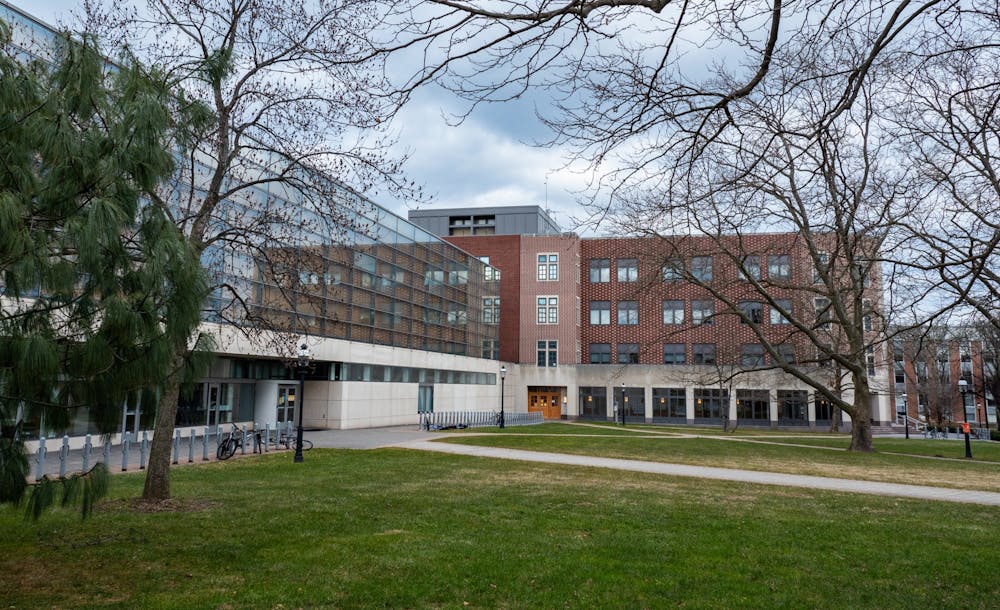We’re living through a technological revolution on Princeton’s campus. A year ago, you’d have to find friends in five other residential colleges to send a message to all the listservs. Today, you can do it with one click using HoagieMail. Need to check the dining hall menus? There are no fewer than three student apps that can tell you what they’re serving side by side (with at least one more on the way, and including one from The Daily Princetonian Business Team). There are now apps to find research opportunities, club data, room draw statistics, graduation requirements, items sold by other Princeton students — the list goes on.
The revolution demonstrates the incredible entrepreneurial potential on Princeton’s campus, but it’s still an underutilized potential. We need to retool the curriculum, specifically the first-year Bachelor of Science in Engineering (BSE) curriculum, to better teach engineering design.
Engineering education is important — it’s the only curriculum on campus that can build the skills necessary to actualize ideas. We live in a rapidly changing world, and it’s important that our finest minds not only have the passion to solve problems but the skill needed to do so. If this is our goal, the first-year student in the engineering curriculum is one of the most critical. Therefore, the curriculum should reflect what it means to be an engineer in the modern world.
But while our first-year curriculum covers a lot of important content, it seems to lack the fundamental ethos of engineering, spurning core engineering skills like modularity, teamwork, love for failure, creativity, concision, and adaptability. Rather than engaging creatively, students struggle through pages of one-answer problem sets. Rather than promoting collaboration, the math and computer science departments have gone on an inquisition to stamp it out entirely. Rather than embracing failure, failure sinks grades and hopes.
To see the importance of these missing skills, we only have to look to where engineering is actually practiced on campus: in extracurricular app development. The rise of the campus apps is a prime example of positive engineering culture on campus — a dynamic environment focused on creation, where people put their minds to problems and solve them.
I spoke to two of the key figures behind the tech revolution — TigerApps Chair Charles An ’22 and Hoagie founder Gagik Amaryan ’22 — to understand what’s behind it.
“Hoagie, as it is now, is very much inspired by the need for proper engineering culture on campus,” Amaryan said, noting that in the past, many attempts at engineering solutions have fizzled out due to a lack of support. An seconded this view, crediting the revolution to better institutional support of developers.
Both student leaders emphasized the importance of engineering soft skills in app development. Amaryan highlighted modularity (the repeated use of a common module) as a key feature of Hoagie apps: “there’s an entire team dedicated to just these shared elements that just make it easier for future apps to get developed.”
He highlighted that collaboration in app development was sometimes new to Princeton students: “I do think that specifically in the context of creating an app together where they have a lot of ownership [. . .] there’s really not much of it on campus.” An highlighted the role of embracing failure in engineering, saying, “Over 50 percent of the time that you spend, unless you get lucky, is debugging ... I think embracing that the first time you hit compile, you’re going to get a lot of errors [is] important.”
Why doesn’t the curriculum reflect what are commonly accepted as the fundamentals of engineering? When I spoke to Associate Dean of Undergraduate Affairs Peter Bogucki, he stressed that core science was critical to engineering at Princeton.
“If you want to find one core principle of Princeton Engineering education, it is the focus on engineering science principles,” he told me. “We get smart students here, and they can handle the Engineering science principles first, and we want them to master those through their application [e.g. design] later on.” There’s nothing objectionable with that philosophy, but engineering is more than knowledge — it’s also about attitude and skills. There has to be space for both in the first year curriculum.
I propose that Princeton incorporate a new first year core course in which students work in groups to build things with projects spanning multiple engineering disciplines. The course should embrace failure, grading on process, not result. And it should teach students skills that they can take away, so that they can immediately start building and creating on their own. In recent years, engineering schools across the country have realized this need and created courses to fit. Princeton can’t be left behind.

Bogucki noted a bizarre Princeton administrative rule that hampers the possibility of a design course in the first year. Unlike most schools, Princeton values all courses at four credits — making a one credit design course (as at schools like RPI) impossible. This is an easy bureaucratic hurdle to overcome. But more importantly, when we have to balance first-year science and first-year design, it’s not clear why design should always be the one that has to make way, especially as many engineering students skip straight out of the first-year science courses using AP credits.
I urge us to dream more ambitiously. We could all have the tools to improve our school, not just through campus apps but through all sorts of innovations unlocked by the engineering method. BSE students could end their first year enthused about their field with some of the most important building blocks to their education already in place, and A.B. students could take a course that makes innovation accessible to even the nontechnical personality. The tech revolution isn’t slowing down, and we have to choose to give everyone the tools to contribute.
Rohit Narayanan is a sophomore electrical engineering major from McLean, Virginia. He can be reached at rohitan@princeton.edu.









